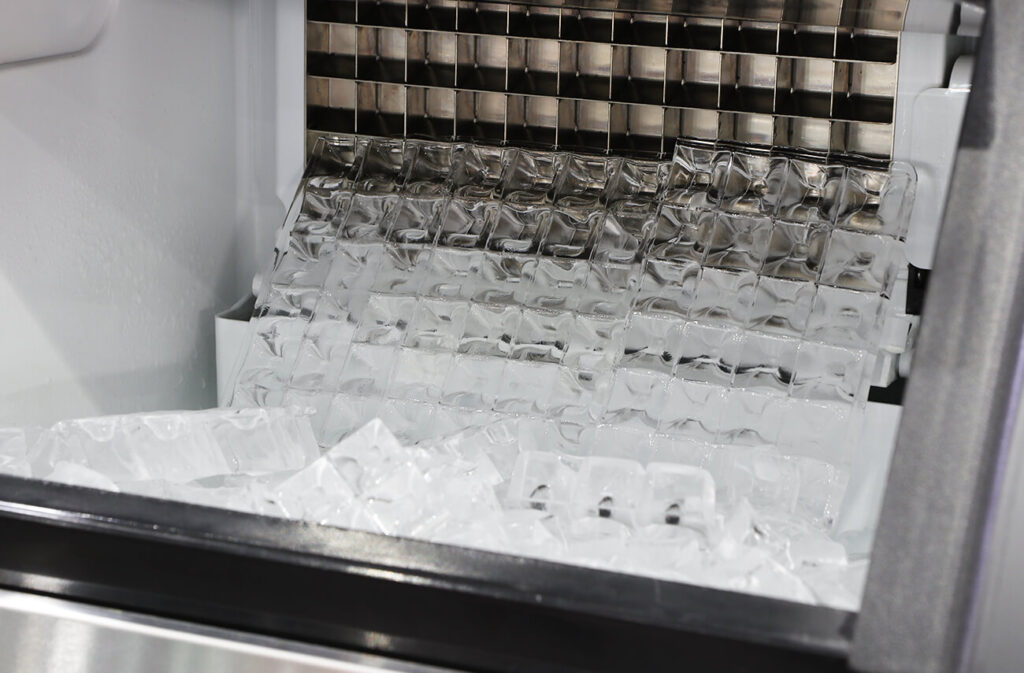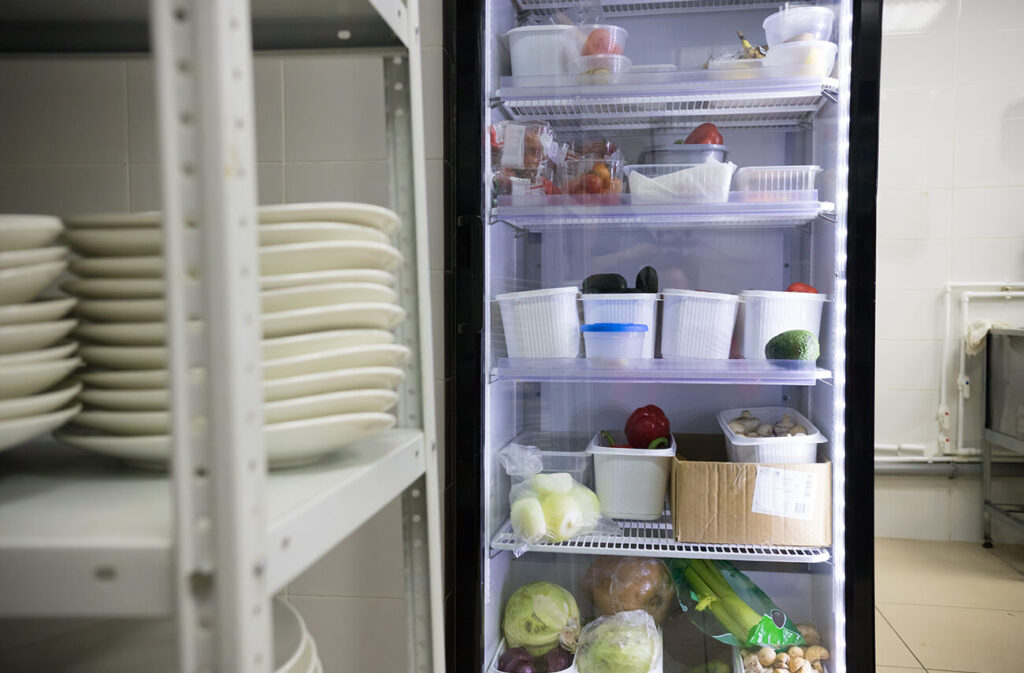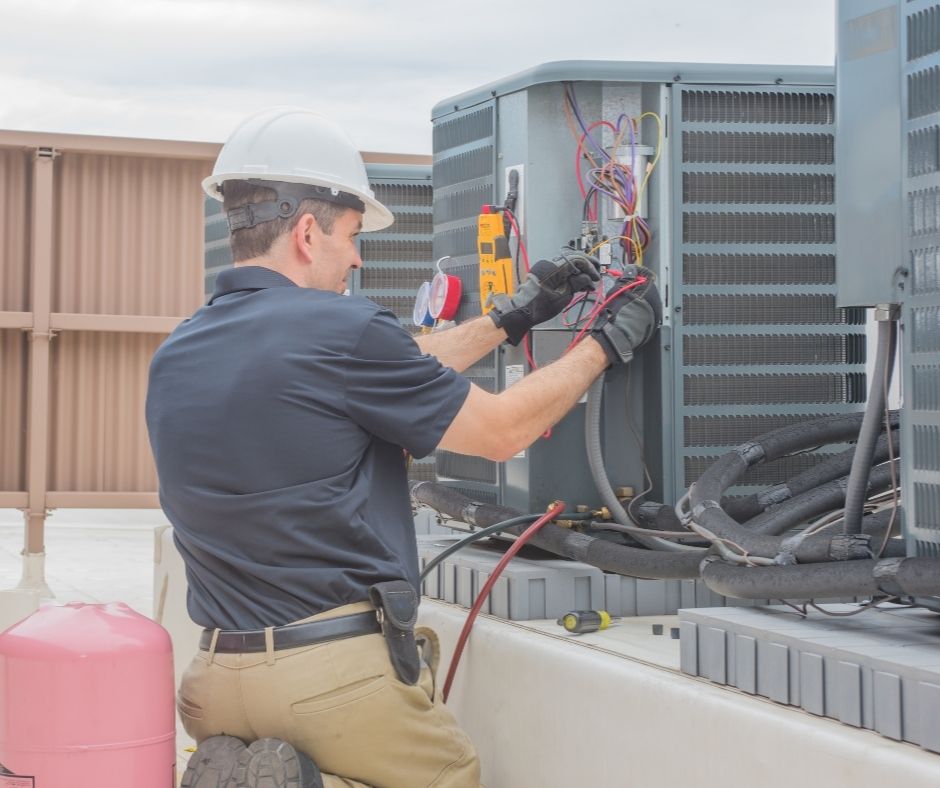With summer just around the corner, your HVAC system needs to handle the heat without blowing your operating budget.
Restaurant facilities present unique challenges for HVAC system selection because of kitchen demands. How the kitchen handles the air affects comfort levels and quality throughout the building. With no one-size-fits-all solution, you must consider the fundamentals and interrelated parts. With this in mind, you get the most from your capital expenditure while minimizing operating and energy costs during the summer heat.
Keeping your facility cool in the summer without cooling off profits requires:
- Wise selection when choosing a system suitable for your facility
- Awareness of common problems and how to address them
- A rock-solid preventive maintenance program
- Maintaining building balance so negative building pressure doesn’t impact your brand, customer comfort, or system efficiency
Choosing a System
Ventilation equipment can be the most expensive equipment in the kitchen. With as much a quarter of a restaurant’s total energy usage going to the HVAC system, you need to get the best bang for your buck.
Local code dictates system requirements, and the path for new construction versus replacement is very location-specific. New purchases do not need to match-up any ductwork or unit space. As a result, they are typically easier to handle. When replacing a unit, it is, however, more economical to match-up. Since every vendor offers different air transitions, sticking to the same brand allows you to keep similar airflow designs and reduce costs.
The type of restaurant location will impact the tonnage unit choice. Dominic Talavera, Vice President of Development at Johnny Rockets, for instance, states food court locations require different configurations and fewer units than their standalone buildings, for instance.
HVAC systems introduce outside air to the building system. During the heat of the summer, this means hot and humid air in all but the driest desert locations. Assess how different units address temperature and humidity, particularly in the kitchen. Duct sizing and unit design will reduce kitchen airflow while ensuring variable exhaust can handle the cooking loads effectively.
Buying direct from the factory offers considerable savings. When dealing with units plus installation that cost, on average, $11,000, every dollar count. Factor warranty terms and conditions into overall operating costs. You will mostly find five-year compressor/10-year heat exchanger warranties. Some manufacturers offer 10-year parts and labor on all components. Considering the total cost of ownership with your decision-making process as a 15-ton unit can cost $5,000 or more to replace a compressor. Fifteen years is a good life span for an HVAC unit with proper maintenance.
Common Problems
The most common problems include:
- Performing preventive maintenance in a timely and thorough manner.
- Staff who fiddle with the pre-set thermostats.
- HVAC system chugging along under a load of extreme conditions, but not working effectively.
- Maintaining positive building pressure.
- Insufficient make-up air not creating appropriate capture and containment.
- Misplaced hoods.
- Blocked drains creating water leaks, backups, inefficient cooling/ heating, and not enough air blowing.
- Decrease in profits due to customer discomfort, reduced staff productivity, and excessive energy costs.
- Condensation from excess humidity and heat during summer months due to the system not being properly balanced.
Customer comfort is a critical factor in the dining experience, especially during the sweltering summer months. Air temperature matters. Planning for the peaks and valleys of the day can go a long way toward operating efficiency and customer comfort.
Preventive Maintenance
Good preventive maintenance over the long haul usually extends the life of the unit by 30%. Maintenance and testing should occur during early spring and then in the fall and include a full test of the system. This ensures the air conditioning is operating within an acceptable temperature tolerance and fully functioning. You don’t want to find out during a heatwave that the A/C is on the fritz.
The HVAC system is often out of sight, out of mind. Make it a priority as it is one of the easiest things to maintain on a regular schedule, yet expensive to replace.
Good preventive maintenance program runs quarterly and includes:
- Cleaning and changing filters
- Inspecting, tightening, and replacing belts
- Lubricating moving parts
- Checking temperature of pipes
- Inspect ductwork and calibrating, when necessary
- Deep cleaning of the HVAC coils Using a non-caustic and biodegradable cleaning solution/foam. This penetrates deep into the coil system. Avoid high-pressure washes as they only clean the surface and may damage delicate coils.
- Performing spring and fall startups, you know your system is working efficiently before the first hot or cold day of the season.
Regularly replacing air filters prolongs the life expectancy of an HVAC unit. The choice of filters impacts operating costs. Pleated filters capture allergens better and tend to keep the coils cleaner, extending the life of the more expensive moving parts of the HVAC system. As with many maintenance-related activities, Bob Fonville, CRFP, Director of Facilities at Fuddruckers, Cheeseburgers in Paradise, and Luby’s, follows a quarterly maintenance schedule and recommends a system of checks and balances. He labels filters and other parts with initials and dates to ensure technicians replace them each time. He asks technicians to show him the filters after replacement to ensure no one tries to cut corners. Building a long-term relationship with your vendor helps make this extra check and balance part of a day’s work versus a way to police the job.
Maintenance is essential, and Talavera explained that for many of his locations, he follows a seasonal, twice-a-year routine. However, high-volume locations are serviced every four months.
In choosing a preventive maintenance technician, look for someone qualified, local, and reliable. Fonville selects technicians with 20 years of experience because longevity is important to him. With local companies, he is confident in their knowledge of local codes and assured the work is self-performed.
Keep in mind during the preventive maintenance cycle renovations or additions to your restaurant can potentially throw everything off balance when it comes to the indoor comfort of your space. Adjustments to your ductwork may be required to ensure the right amount of airflow is reaching the dining room.
Cost Implications of an Unbalanced Building
One of the biggest energy and money pits as it relates to HVAC performance is building balance. A building should have a positive pressure. Ideally, you are seeking net 5- to 10-percent positive.
In restaurants, one of the culprits of unbalanced building conditions is when kitchen exhaust fans are not set up or operating properly. A lack of make-up air to the fan in the kitchen can throw the entire building out of balance. This problem can exponentially affect HVAC because of the demand, size and number of kitchen exhaust requirements. In the summer, an unbalanced fan exacerbates the high humidity problem, particularly in places such as oceanfront restaurants.
An unbalanced building exhibits one or more of these symptoms:
- Humidity
- Doors hard to open
- Too cold in summer/too hot in winter
- Backdrafts
- Poor smoke capture by the hood systems
- Condensation dripping
- Complaints from patrons
- Drafts
- Odors
Even the best HVAC system cannot overcome an unbalanced environment, resulting in higher utility costs.
Data from the RFMA webinar, “How Buildings Breathe” by Charles Dugo with Bloomin’ Brands and David Harrison with D R Management Enterprises, finds the following quantifiable impact on this increase in utility costs due to an unbalanced building: “Our data from more than 1,800 utility bills suggests that electric is inflated as much as 20 percent when operating a restaurant with a negative balance pulling in unconditioned air.”
Common causes of an unbalanced building include:
- Equipment deficiency
- Improper calibration and installation/setup
- Deficient preventive maintenance
- Thermostats not programmed properly or frequently adjusted by staff
Installation and maintenance of the HVAC system ensure proper calibration. Procedural standards for calibration can be found via the National Environmental Balancing Bureau; Associated Air Balance Council; or Testing, Adjusting, and Balancing Bureau.
A successful preventive maintenance routine is imperative. Consider locking down thermostats to set ranges so staff cannot override proven comfort-efficient settings. A range of 68-72 degrees effectively manages all four seasons for most areas without the need to fiddle with the system.
Conclusion
In conclusion, an HVAC system can only be as efficient as the environment in which it operates. Seeking harmony between building balance, system calibration, maintenance and operation results in you minimizing operating costs while maximizing energy efficiency and comfort.
By cultivating and executing a strong preventative maintenance schedule and partnering with the proper vendors is key to keep your facility’s assets running smoothly. Allow SLM Facility Solution to provide you a free cost savings analysis, standardized scope of work for all your locations, and reputable vendors to handle all your HVAC needs.
Article feature is RFMA’s The Facilitator.



